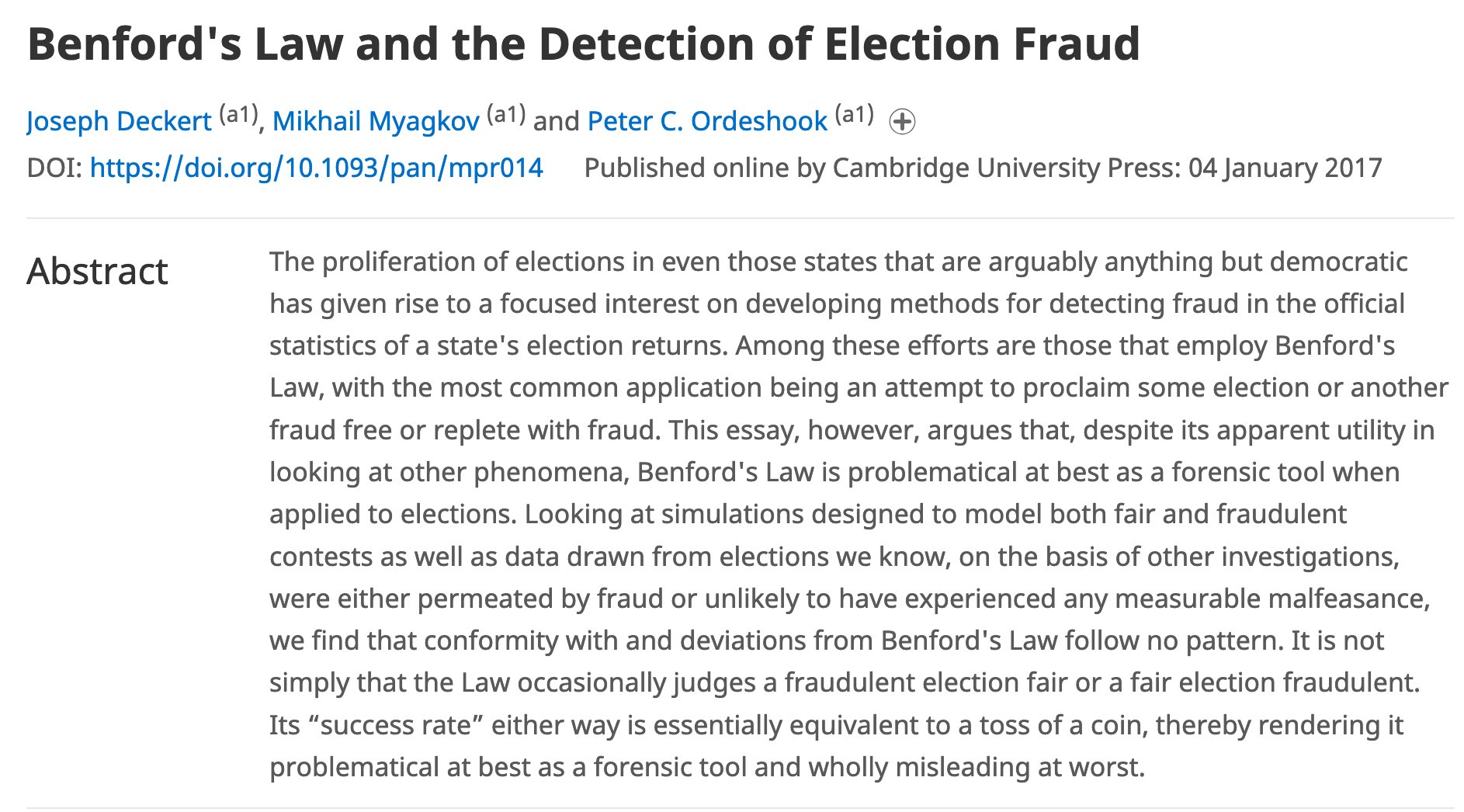Archived from https://twitter.com/jengolbeck/status/1325149961353310208
Dr. Jen Golbeck
@jengolbeck
Prof @ UMD, Computer Scientist
Research (AI, privacy), truth, justice, the American way
I'm also @theGoldenRatio4
she/her
Mastodon: @jengolbeck@hci.social
Science & Technology
College Park, MD
linktr.ee/jengolbeck
Joined February 2010
[RM: @ukipwebmaster had tweeted some bushwah infographic, in a tweet
he/she later deleted, suggesting "Benford's Law" proved that the 2020
presidential general election was stolen from Donald J. Trump by
electoral fraud. This claim came to the attention of Dr. Golbeck, who
posted this reply, and then elaborated as below:]
"My friend, I am an expert on Benford's Law (in fact, I'm in that documentary you watched about it on Netflix). If you'd like me to explain the countless ways you don't know what you're talking about here, let me know."
[RM: Dr. Golbeck then went on, rather engagingly:]
10:55 AM Nov 7, 2020
Let's do this! (listen up @ukipwebmaster & whoever made that stupid graphic) Benford's law is not even useful for detecting election fraud! Deckert, Joseph, Mikhail Myagkov, Peter C. Ordeshook. "Benford's Law and the detection of election fraud." Political Analysis 19.3 (2011) Let them tell you!
"Benford's Law is problematical at best as a forensic tool when applied to elections Its 'success rate' either way is essentially equivalent to a toss of a coin, thereby rendering it problematical at best as a forensic tool and wholly misleading at worst."

Next,, even if we pretended Benford works here (which it does not), what are the numbers that feed those graphs you have? They're not even labeled. You can't just pick numbers willy-nilly and analyze them for Benford's adherence. It works on very specific types of numbers.
But let's say you're theoretically working with numbers that could adhere to Benford. They need to be pulled from similar samples. The vote count over time in this election is not coming from similar samples as previous years
In conclusion, you don't even know what numbers you're showing here, there's no evidence they are even Benford appropriate, you're comparing to a completely different election phenomenon, and Benford doesn't detect election fraud! In shorter conclusion, Stay in your goddamned lane and out of mine.
p.s. If you don't know about Benford's Law, it's fascinating! Episode 4 of "Connected" on @netflix with @latifnasser is all about it and it features me and my dogs talking about it!
Nov. 9, 2020:
Adding to the thread, this paper that looks at this election, explains how Benford's law is correctly applied (not the way y'all are doing it with your first-digit-extracting Excel spreadsheets; SMH), and shows why Benford does not show fraud in this election.
Charles Seife
@cgseife
7:39 AM Nov 9, 2020Breaking: Walter Mebane at UMich — whose paper on 2nd-digit Benford Law deviations in elections has been used to label Biden's victory as fraudulent — has just written about the 2020 election.
His paper speaks for itself.
http://www-personal.umich.edu/~wmebane/inapB.pdf
cc: @jengolbeck
[RM: Dr. Golbeck also covers this matter in greater depth in a blog posting.]